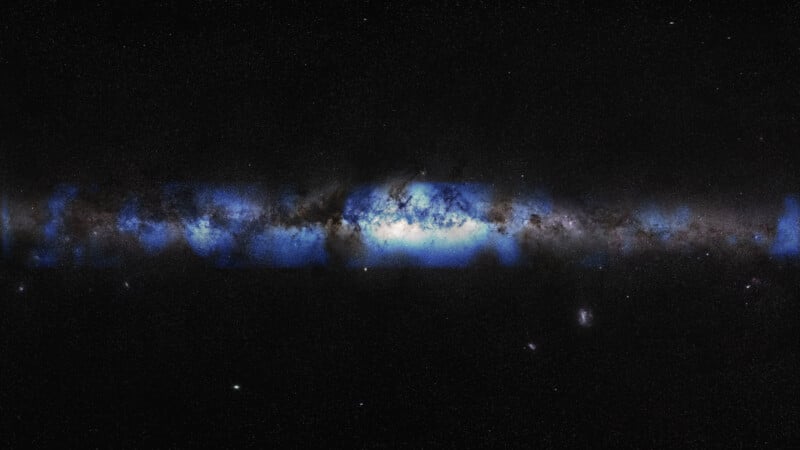
The IceCube Neutrino Observatory has produced an image of the Milky Way using neutrinos. The groundbreaking image is the first of its kind and provides critical evidence that the Milky Way is a source of high-energy neutrinos.
What is a neutrino?
Before addressing the significance of the incredible work done at the IceCube Neutrino Observatory, it is important to briefly discuss the nature of a neutrino.
“A neutrino is a subatomic particle that is very similar to an electron but has no electric charge and a very small mass, which could as well be zero,” he explains American scientist. “Neutrinos are one of the most abundant particles in the universe. Because they have very little interaction with matter, however, they are incredibly difficult to detect.”
To detect neutrinos, scientists use huge and sensitive detectors. A low-energy neutrino will typically travel through many light years of matter before interacting with anything. Hence, neutrino detection experiments on Earth often measure very few neutrinos in a huge detector. For example, American scientist notes that the Sudbury Neutrino Observatory, which has a 1,000-ton heavy-water solar neutrino detector, detects about 30 neutrinos a day.
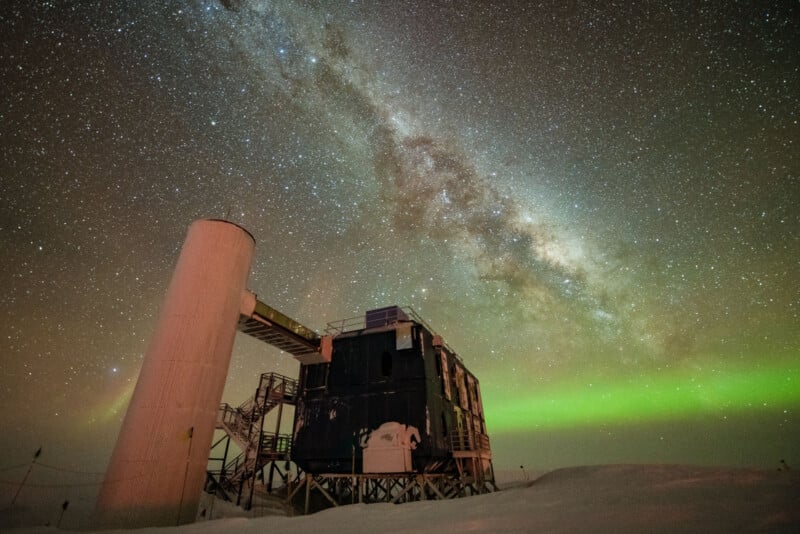
IceCube neutrino observatory
“High-energy neutrinos, with energies millions to billions of times greater than those produced by the fusion reactions that power stars, have been detected by the IceCube Neutrino Observatory, a gigaton detector operating at the Amundsen-Scott South Station Pole. It was built and is operated with funding from the National Science Foundation (NSF) and additional support from the fourteen countries hosting institutional members of the IceCube Collaboration. This first-of-its-kind detector comprises a cubic kilometer of deep Antarctic ice equipped with more than 5,000 light sensors. IceCube searches for signs of high-energy neutrinos originating from our galaxy and beyond, to the furthest reaches of the universe,” explains the IceCube Neutrino Observatory in a press release.
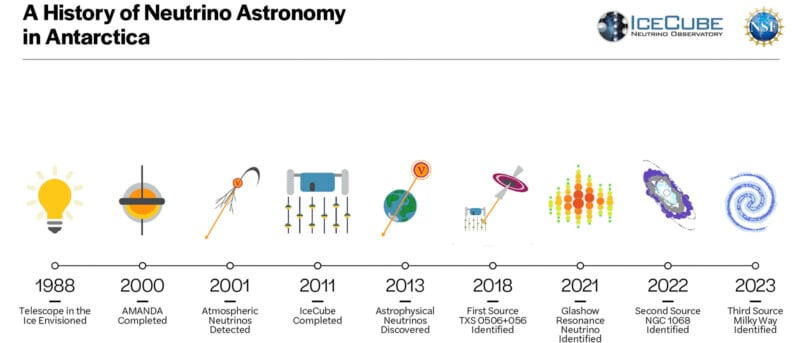
In November 2013, IceCube detected 28 neutrinos that likely originated outside the Solar System. Some of these neutrinos were extremely energetic, including the most energetic neutrinos ever observed at the time, later named “Bert” and “Ernie”. Over the course of the year, “Big Bird” broke the record.
The IceCube collaboration of more than 350 scientists announced in 2018 that they had traced a high-energy neutrino back to its point of origin in the blazar TXS 0506 +056, a quasar located 5.7 billion light-years from Earth. This marked the first time a neutrino detector was able to identify an object in space and pointed to a cosmic ray source.
In November 2022, the IceCube collaboration detected a neutrino source emitted from the active galactic nucleus of Messier 77, a barred spiral galaxy located approximately 47 million light-years from Earth.
The new view of the Milky Way through the neutrino lens
After more than a decade of monumental science observations, the latest discovery from the IceCube Neutrino Observatory may be its most impressive yet. Using data collected from the observatory, the IceCube collaboration has delivered its stunning view of the Milky Way galaxy ‘painted’ with neutrino particles, marking the first time the galaxy has been observed using one particle rather than different wavelengths of the light.
The Milky Way and many other cosmological structures have been observed in various wavelengths of light, including the infrared bands, visible light, X-rays, gamma rays, radio waves and more.
Neutrinos are generated within the Milky Way when cosmic rays, which are high-energy particles or fragments of atoms that originate outside the solar system and travel through the interstellar medium at nearly the speed of light, collide with interstellar matter. Neutrinos are also generated by stars, and probably by exploding stars, although this is not a settled issue. Neutrinos provide scientists with a unique view of very high-energy events in the Milky Way galaxy and the rest of the universe that cannot be seen using light alone.
The sensors of the IceCube neutrino observatory are buried several kilometers under the extremely clear Antarctic ice. The observatory relies on this ice under immense pressure to detect the faint radiation emitted by charged particles. “The particles are created by incoming neutrinos, which come from cosmic ray collisions in the galaxy, hitting atoms in the ice,” he writes The conversation.

Spectral Messengers
Neutrinos, often called spectral particles, have been hitting the sensors of the IceCube Neutrino Observatory since construction was completed. However, not all neutrinos have an astrophysical origin: some neutrinos derive from the interaction and collision of cosmic rays with the Earth’s atmosphere. While undoubtedly interesting, these locally sourced neutrinos must be separated from neutrinos from deep space.
The IceCube Collaboration researchers narrowed their attention to a specific type of neutrino interaction called a cascade. These interactions are roughly spherical “showers of light” and provide increased sensitivity to astrophysical neutrinos from the Milky Way. A cascade interaction is more difficult to reconstruct, but provides a more accurate measurement of a neutrino’s energy, which is a strong indicator of its origin.
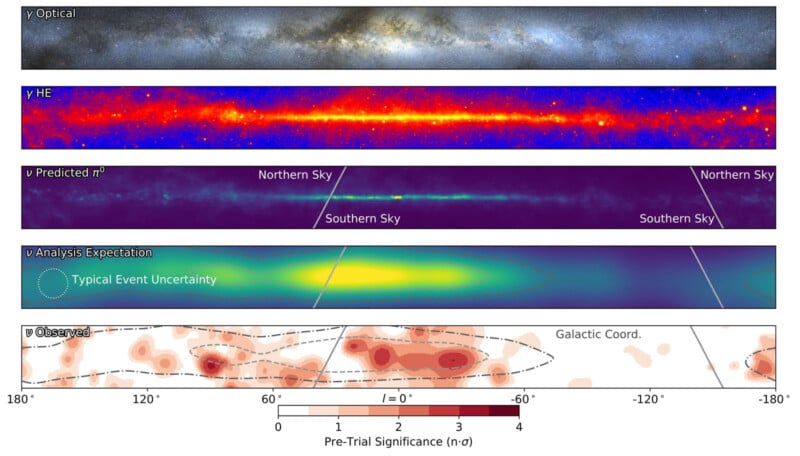
“Analysis of ten years of IceCube data using sophisticated machine learning techniques yielded nearly 60,000 neutrino events with an energy exceeding 500 gigaelectron volts (GeV). Of these, only about 7% were of astrophysical origin, while the rest was due to the “background” source of neutrinos that are generated in the Earth’s atmosphere,” he writes. The conversation.
The team’s findings reject the hypothesis that all measured neutrino events result from interactions in the Earth’s atmosphere. However, the research did not quite meet the standard 5 sigma standard for statistical significance in particle physics. That said, the team says its result has only a 1 in 150,000 chance of being a fluke.
“What’s interesting is that, unlike light of any wavelength, in neutrinos, the universe eclipses nearby sources in our own galaxy,” says Francis Halzen, a physics professor at the University of Wisconsin-Madison, the principal researcher of Ice Cube.
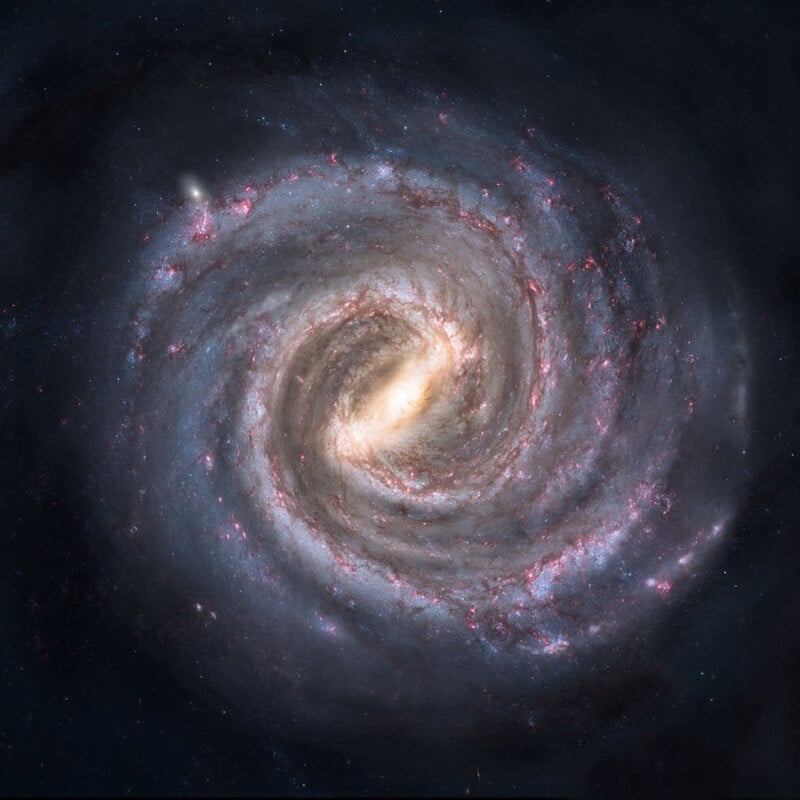
“As is often the case, significant advances in science are made possible by advances in technology,” says Denise Caldwell, director of NSF’s Division of Physics. “The capabilities provided by the highly sensitive IceCube detector, together with new data analysis tools, have given us an entirely new view of our galaxy, one that had only been hinted at before. As these capabilities continue to be refined, we look forward to seeing this image emerge in ever-increasing resolution, potentially revealing hidden features of our galaxy never before seen by humanity.”
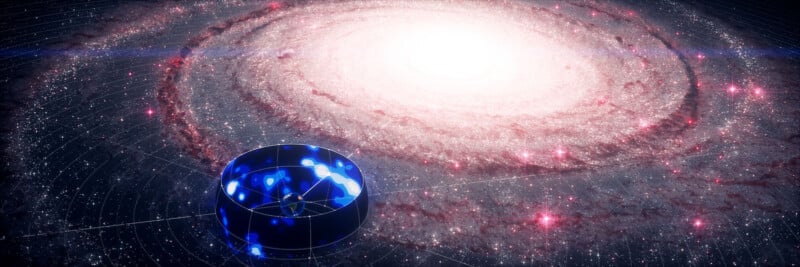
The team used machine learning methods developed by IceCube collaborators at TU Dortmund University to improve the detection and identification of neutrino cascades. Analytical methods also provided accurate directional data and enabled energy reconstruction.
“The improved methods have allowed us to retain over an order of magnitude more neutrino events with improved angular reconstruction, resulting in an analysis that is three times more sensitive than previous research,” says IceCube member TU Dortmund Ph .D. in physics. student and co-lead analyzer Mirco Hnnefeld.
The next steps
“The strong evidence that the Milky Way is a source of high-energy neutrinos has survived rigorous testing of the collaboration,” says Ignacio Taboada, a professor of physics at the Georgia Institute of Technology and a spokesperson for IceCube. “Now the next step is to identify specific sources within the galaxy.”
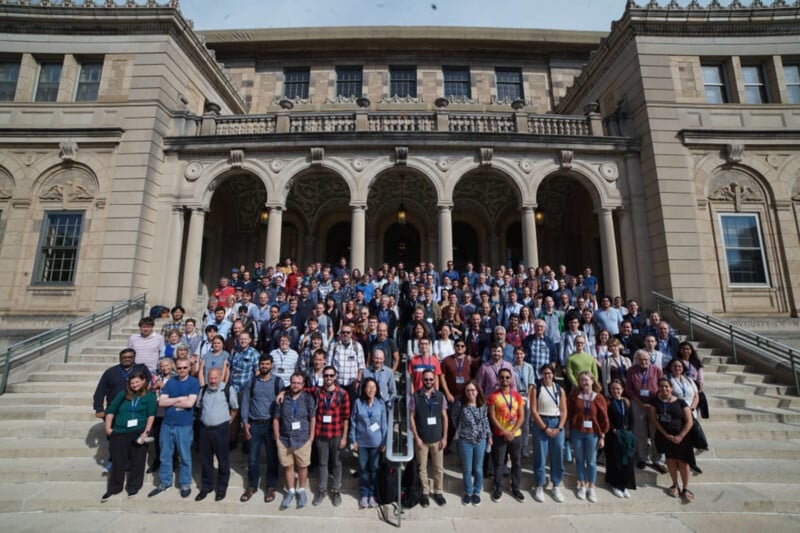
The IceCube collaboration plans further observations and analyses, and a planned expansion, IceCube Gen2, will be 10 times larger than the current experiment. The team says this will allow them to transform the “current blurry image” into a detailed view of the Milky Way galaxy.
“Observing our galaxy for the first time using particles instead of light is a huge step,” says Naoko Kurahashi Neilson, professor of physics at Drexel University and IceCube member. “As neutrino astronomy evolves, we will have a new lens with which to observe the universe.”
#Revolutionary #image #Milky #captured #lens #Antarctic #neutrino
Image Source : petapixel.com
